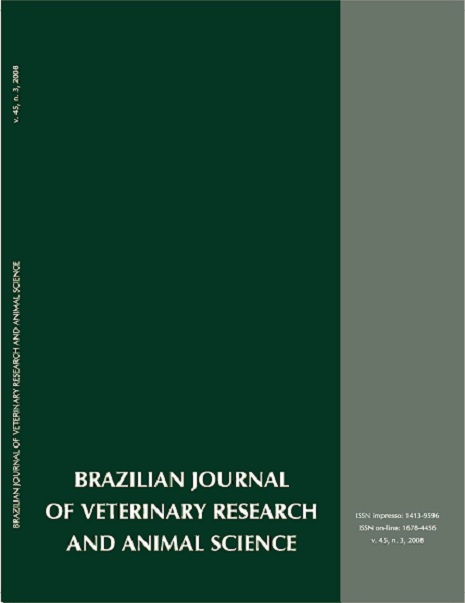Fecal contamination of the mangrove oyster Crassostrea rhizophorae and the cultivation water at the river pacoti estuary (Eusébio Ceará State): Identification and isolation of Escherichia coli and its susceptibility to different antimicrobians
DOI:
https://doi.org/10.11606/issn.1678-4456.bjvras.2008.26695Keywords:
Oyster, Escherichia coli, Susceptibility to antimicrobiansAbstract
This study has been designed to assess the microbiological quality of oyster Crassostrea rhizophorae and of the water used in farms located at the Pacoti River estuary, Ceará State, by means of the MPN of total coliforms (Ct) and thermtolerant coliforms (CT). The database consisted of 15 samples collected from June to November, 2006. The water was kept within the limits set up by the current legislation. MPN values were in the ranges of <1.8 18,000 Ct per 100 ml and <1.8 2,000 CT per 100 ml, for the water, and <1.8 3,500 Ct per gram and <1.8 2,800 CT per gram for the oyster itself. Twenty-five strains isolated from the cultivation water and identified as Escherichia coli were tested for susceptibility to a few antimicrobians and proved resistant to ampicillin, nitrofurantoin, tetracycline, sulfazotrin, nalidixic acid, ciprofloxacin and imipenem. From the oysters, four strains were identified as E. coli and proved resistant to tetracycline and imipenem. From the afore-mentioned results, it can be concluded that: Pacoti River waters have received a clean bill of health according to the national legislation; the majority of water-isolated E.coli strains (59.43%) were sensitive to the currently used antimicrobians, except for imipenem to which 80% of the identified E. coli strains proved resistant; sensitivity of the oyster-isolated E. coli strains was found to be high to most of the tested antimicrobians. In all, it is suggested that more clear management measures be made available so as to allow for microbiological quality evaluation of raw-consumed mollusks.Downloads
Download data is not yet available.
Downloads
Published
2008-06-01
Issue
Section
UNDEFINIED
License
The journal content is authorized under the Creative Commons BY-NC-SA license (summary of the license: https://
How to Cite
1.
Vieira RHS dos F, Atayde MA, Carvalho EMR de, Carvalho FCT de, Fonteles Filho AA. Fecal contamination of the mangrove oyster Crassostrea rhizophorae and the cultivation water at the river pacoti estuary (Eusébio Ceará State): Identification and isolation of Escherichia coli and its susceptibility to different antimicrobians. Braz. J. Vet. Res. Anim. Sci. [Internet]. 2008 Jun. 1 [cited 2024 Apr. 16];45(3):180-9. Available from: https://revistas.usp.br/bjvras/article/view/26695





